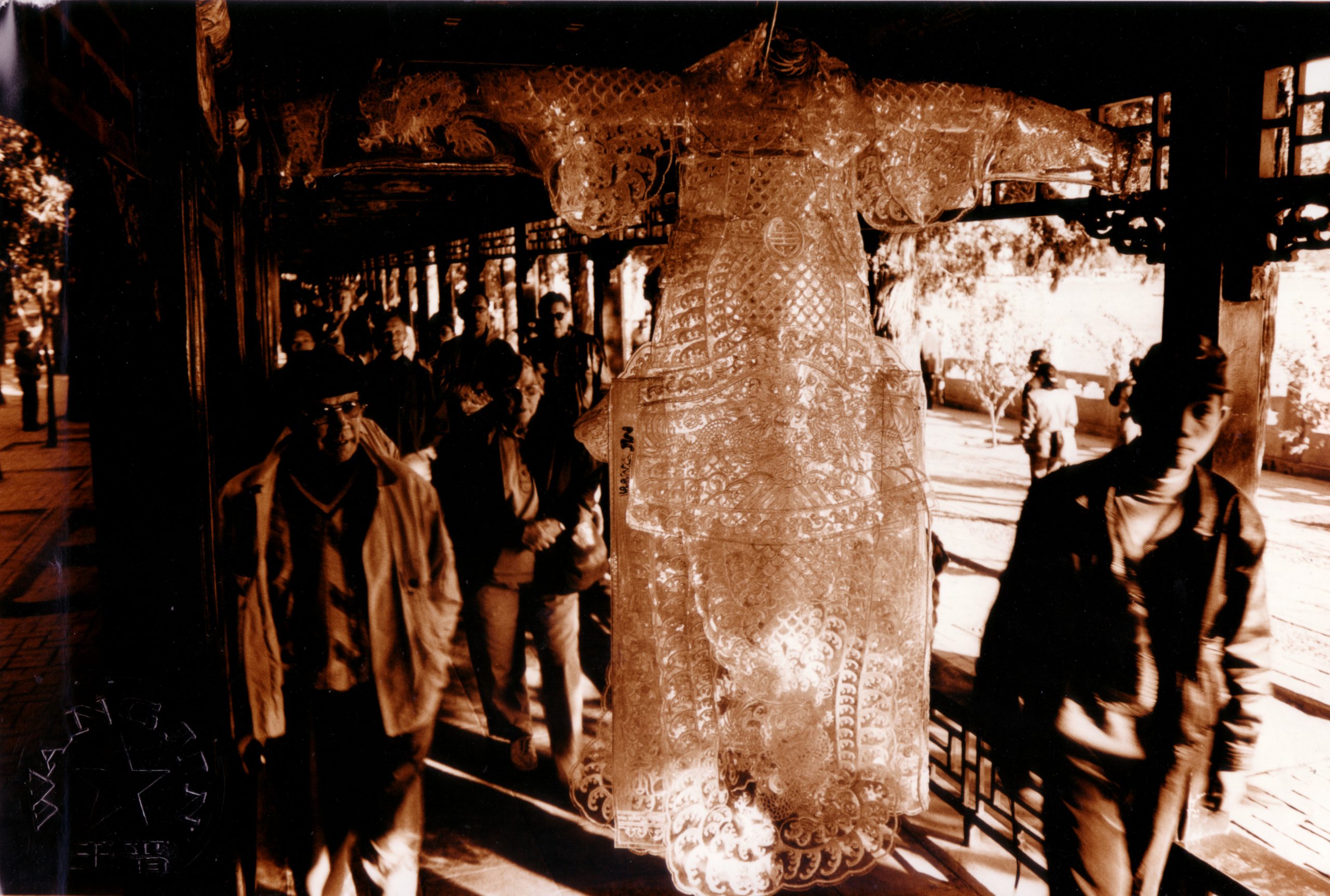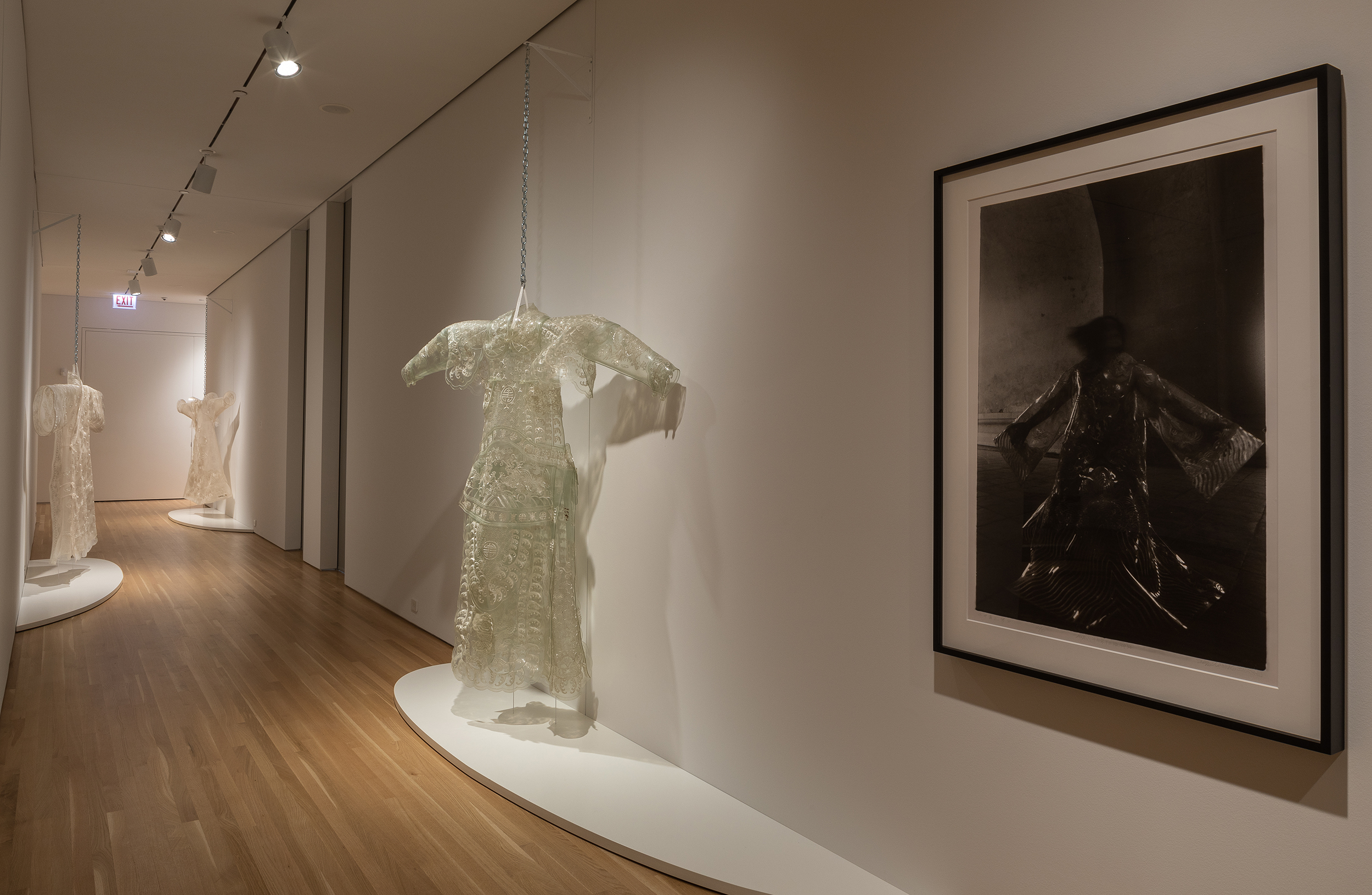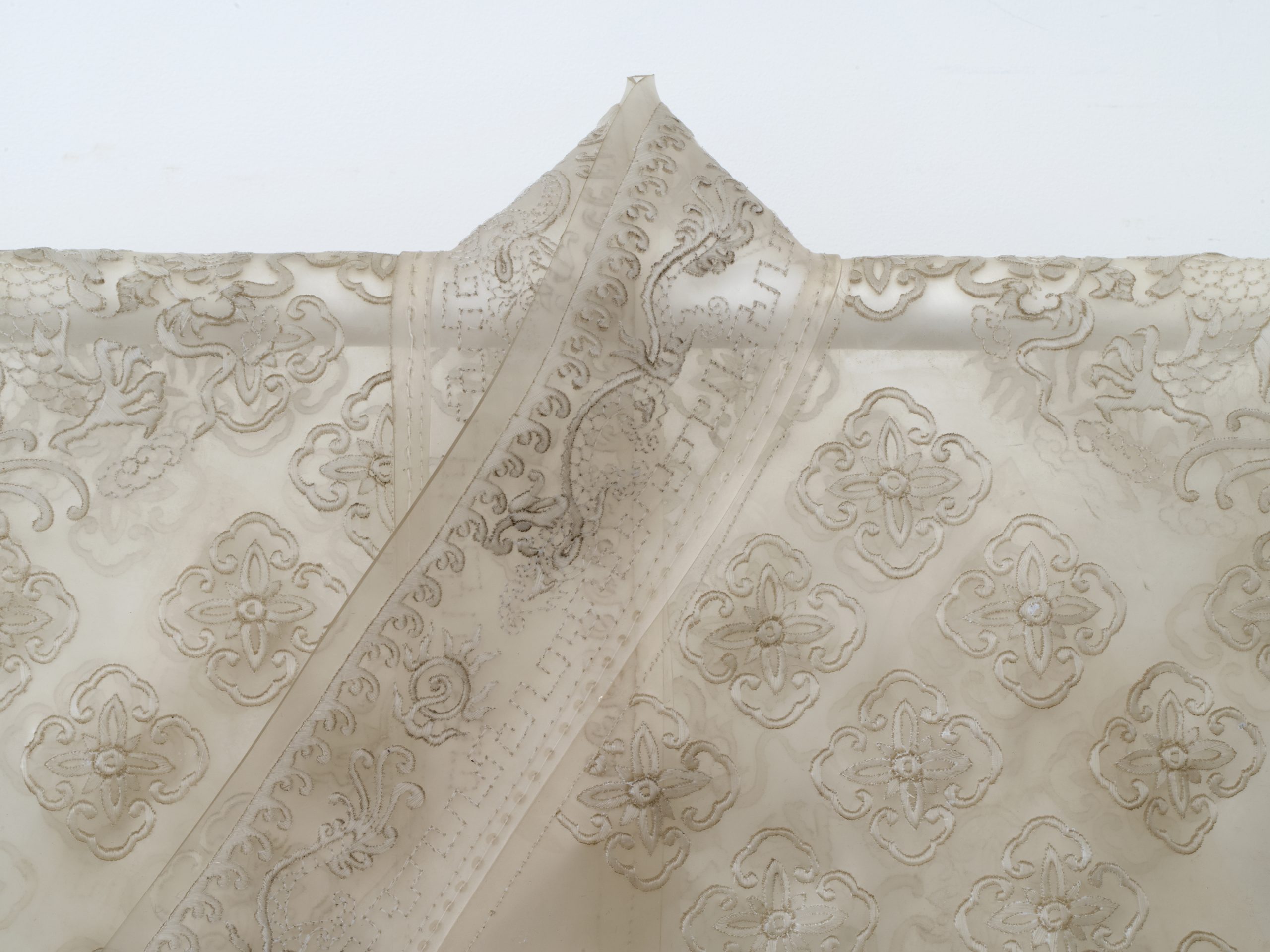
Artist Profile
Wang Jin’s many performance and environmental projects since the early 1990s reflect upon the rapid spread of capitalism in China, as well as other social and political issues. Wang’s incisive works comment on the clash and fusion of new and old values by staging ironic combinations of foreign and Chinese symbols.
Originally created for one of the first domestic auctions of contemporary art in Beijing in 1997, A Chinese Dream faithfully reproduces Peking Opera costumes and imperial robes of the Qing dynasty using translucent PVC plastic sheets. The imperial robes and theatrical costumes levitate like specters of a bygone age. Such garments traditionally bear encoded symbols, such as five-clawed dragons representing the imperial house, or the multicolored waves, rocks, and clouds that present the universe under the ruler’s sway.
Here, rich silks, golden threads, and opulent brocades are replaced with a common industrial material, polyvinyl chloride (PVC) plastic. Wang’s choice to reproduce both imperial and theatrical attire underscores the dichotomy of the authentic and fake; the vague, Orientalizing title, Chinese Dream, alludes to the commercialization of tradition. Worn as part of the artist’s performance piece, Dream of China No. 2, these robes take on new meaning in the contemporary context.
Works on View
A Chinese Dream, 2006
Polyvinyl chloride and vinyl filament
67 x 82 1/2 x 5 in. (170.2 x 209.5 x 12.7 cm)
Private collection, New York
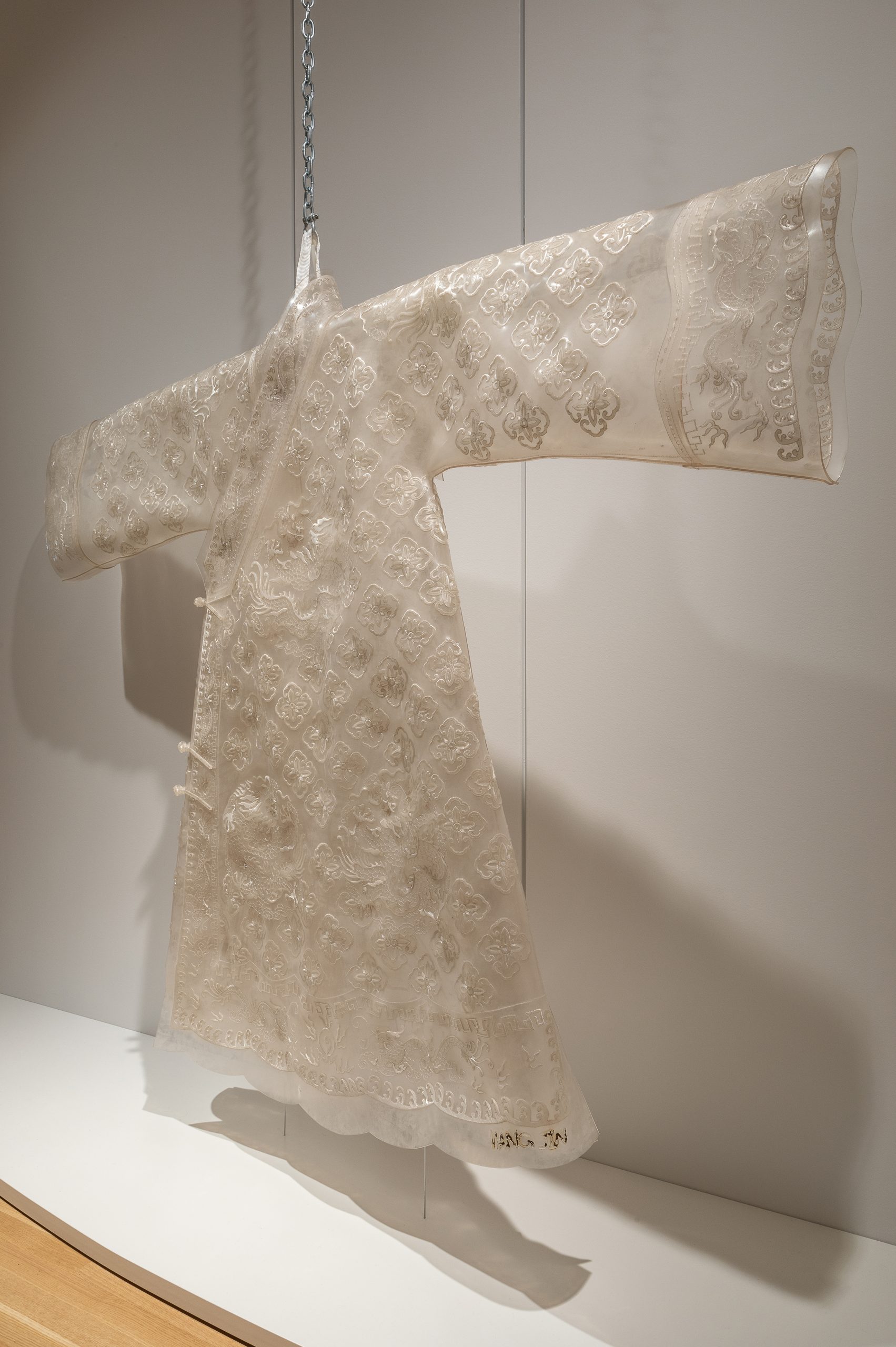
The Dream of China: Dragon Robe, 1997
Polyvinyl chloride and vinyl filament
71 x 78 x 15 in. (180.3 x 198.1 x 38.1 cm)
The Farber Collection
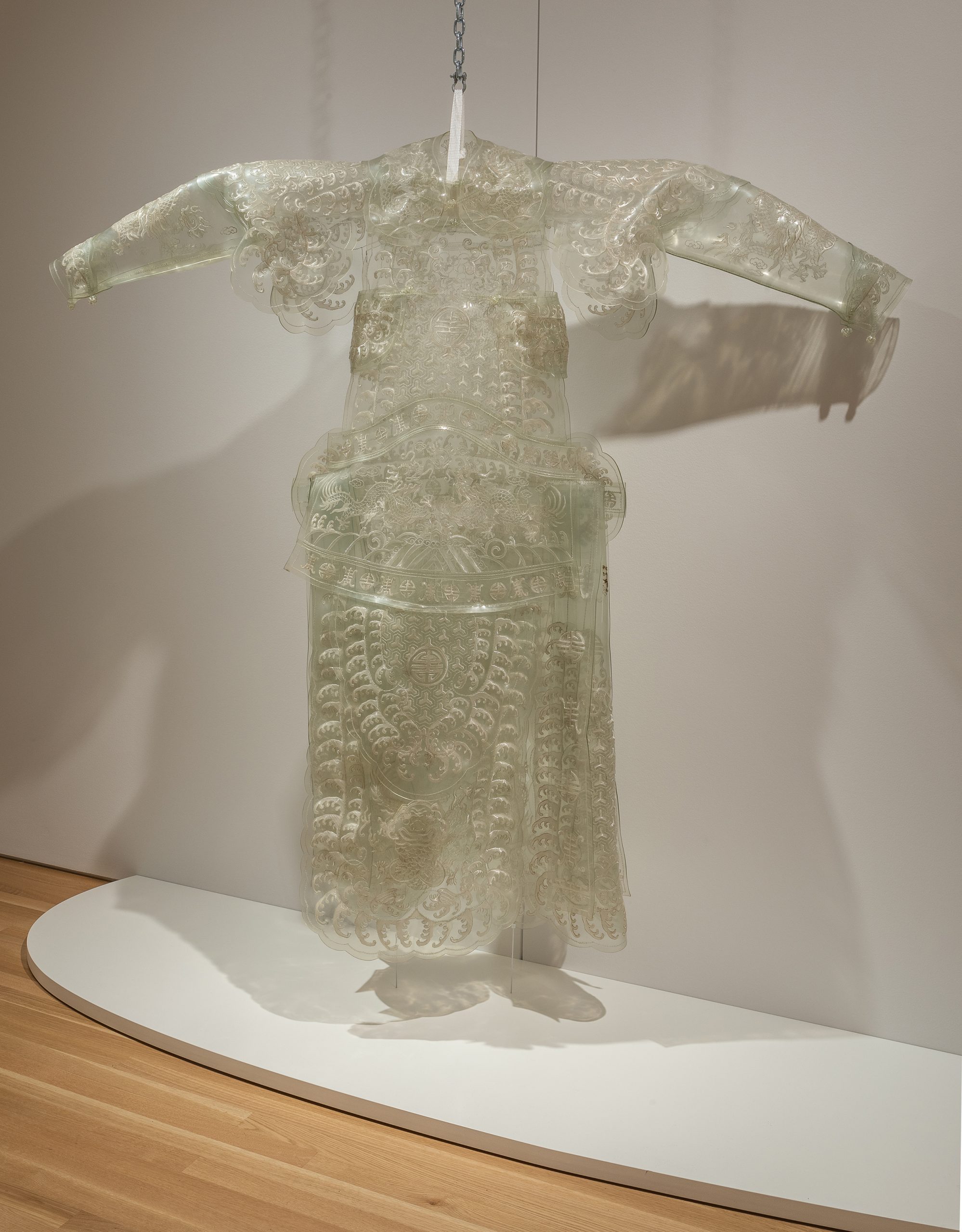
Chinese Dream, 2006
Polyvinyl chloride, vinyl filament, iron chain, and hook
67 x 82 1/2 x 5 in. (170.2 x 210 x 12.7 cm)
Pizzuti Collection
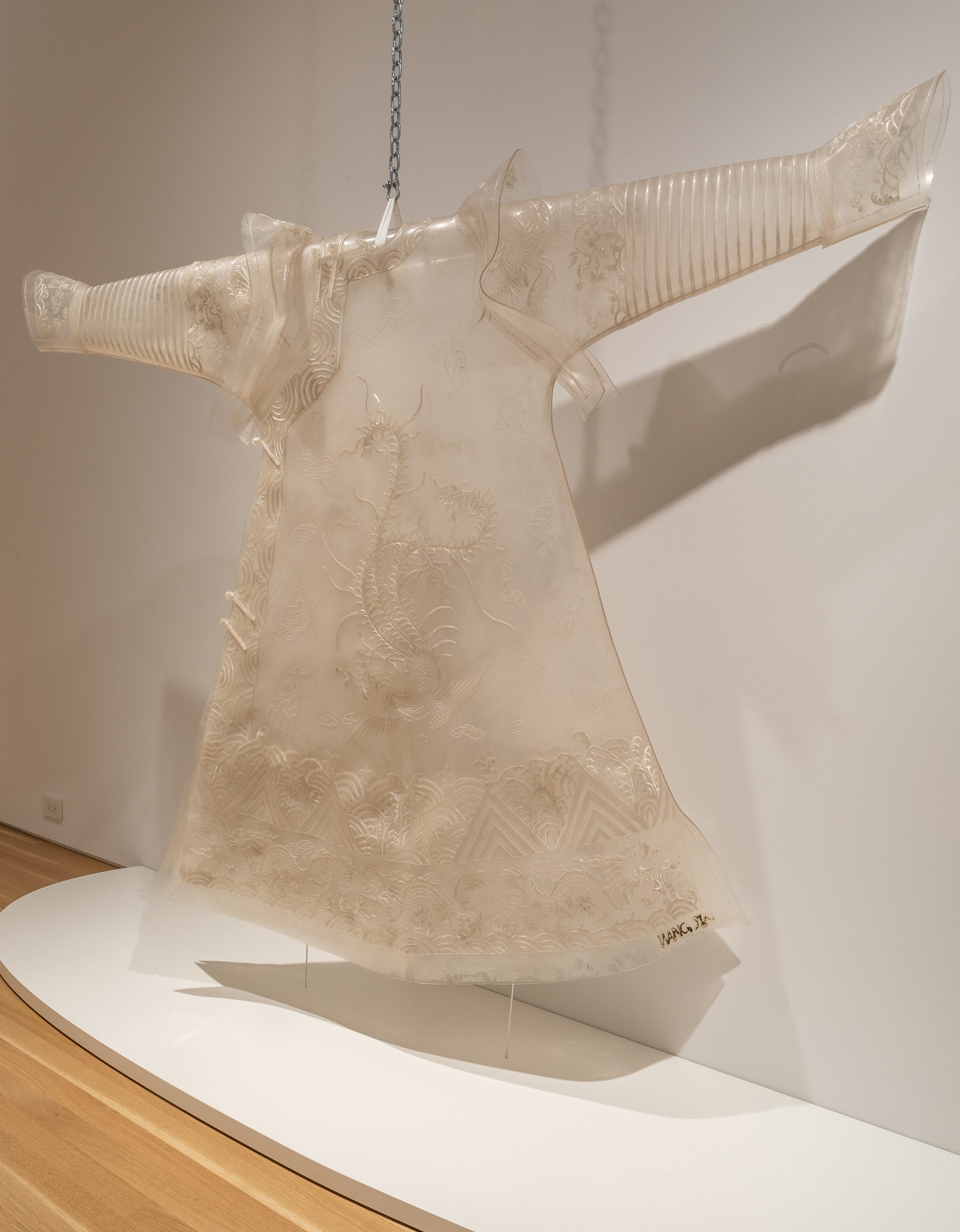
Dream of China No. 2, 1998
Black-and-white photograph
50 13/16 × 38 3/16 in. (129 × 97 cm)
Courtesy of Pékin Fine Arts

